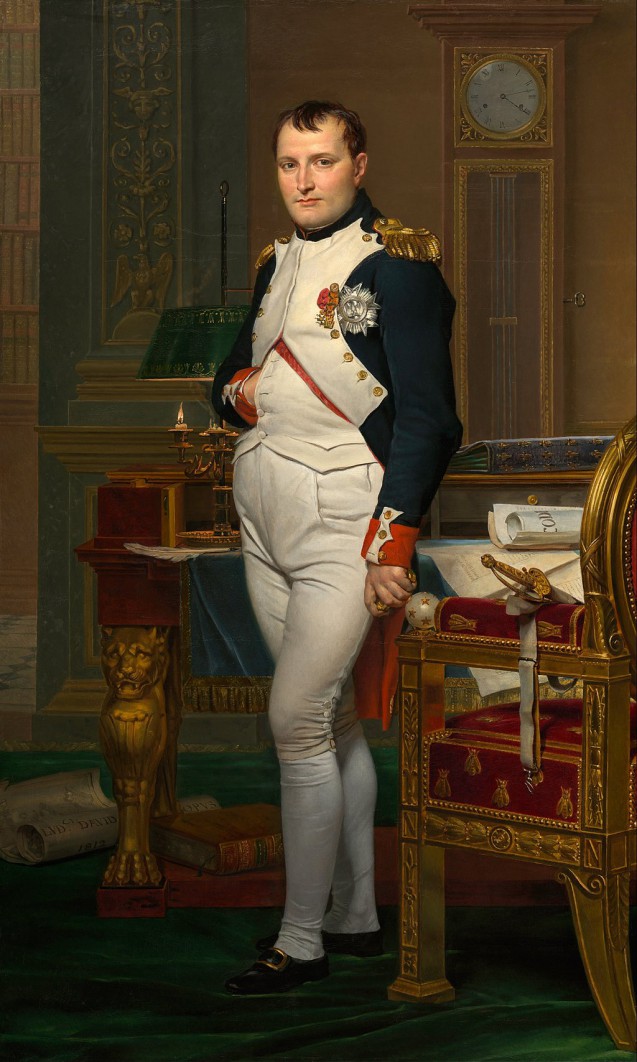On 3 August, 1811, the wealthy Scot, Alexander, Marquis of Douglas – who was to become the tenth Duke of Hamilton in 1819 – wrote to David commissioning from him a portrait of Napoleon. “… You have graciously chosen my brush through which to transfer onto canvas the features of the Great Man and to show him at one of the events which have brought him immortality”, the artist replied on 20 September (presumably quoting Hamilton’s letter of commission). David agreed to paint a standing portrait for a sum which varied between 20 and 24,000 F but which was finally 1,000 guineas (= 18,650 F). The work was completed towards the end of March 1812 and it attracted to the painter’s atelier (to quote David himself – Letter to Hamilton, dated 8 May, 1812) “huge numbers of people because of the exceedingly close resemblance to that immortal man… no one to this day has painted such an accurate portrait, not only in the physical features of his face, but also in that air of benevolence, composure and penetration which never leaves it”.
The composition is a radical departure from that traditionally used, namely the representation of the sovereign in ceremonial robes. It is rather a realist allegory which evokes the emperor’s civilian achievements. Napoleon is shown wearing a blue uniform with broad wide lapels, that of a Colonel in the Grenadiers à pied de la Garde. This was the uniform he usually wore on Sundays, the green Chasseurs à cheval uniform being used for the rest of the week. The pose is the classic ‘right hand in waistcoat’ , and the artist makes no attempt to beautify the subject. The silhouette is heavy and his face is almost swollen. In contradistinction to most of David’s other portraits – where the subject’s bust is shown against a bare background – here the study in the background plays a key role. The candles have burnt down to the quick, the clock shows 4-15 am, his pen and papers are thrown down onto the desk. Everything is designed to tell the story that (in David’s words, letter of 8 May 1812) “Napoleon is in his study, having just spent the night writing the Code Napoléon. The only sign that dawn is breaking is that the candles are burnt down and going out, and by the fact that the clock has just struck four in the morning. So he gets up from his desk in order to put on his sword and to go to review his troops”. The painting’s purpose is clear: the military leader is also a powerful statesman, administrator and legislator whose capacities for work are superhuman.
David painted a repeat version of the work, a “second original”, in April 1812. This painting remained in the artist’s atelier and was bought in 1860 by the Second Empire Ministère de la Maison de l’Empereur (Ministry for the Imperial House) and destined for the Salle des Maréchaux in the Tuileries. The painting was returned to the Empress Eugénie as a result of a legal decision in 1880. It was given to the Princesse Mathilde, who in turn passed it on to brother, the Prince Napoléon. This second painting was acquired by the French State in 1979.
Karine Huguenaud (tr. P.H.)
September 2006


